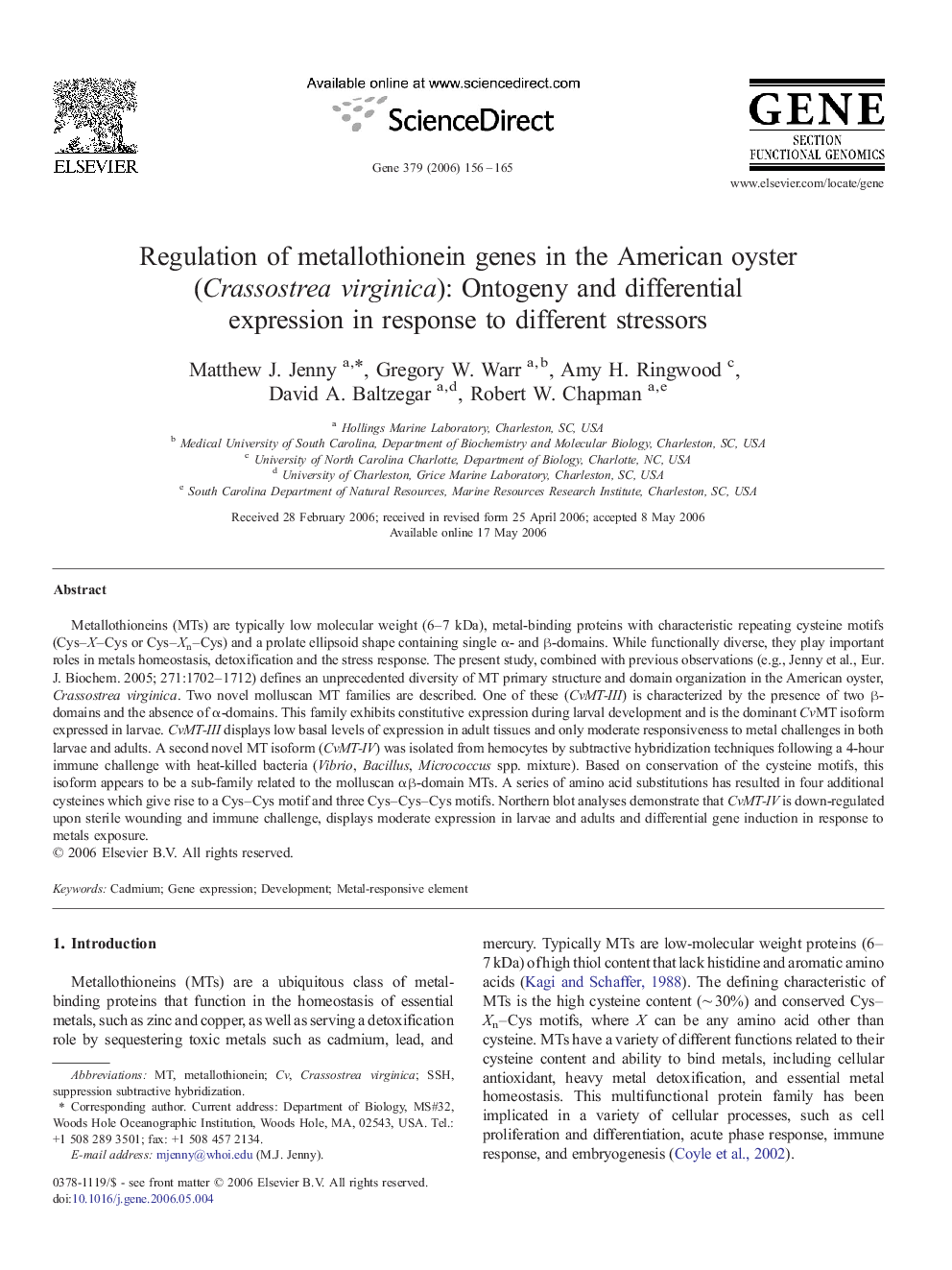| Article ID | Journal | Published Year | Pages | File Type |
|---|---|---|---|---|
| 2820160 | Gene | 2006 | 10 Pages |
Abstract
Metallothioneins (MTs) are typically low molecular weight (6-7 kDa), metal-binding proteins with characteristic repeating cysteine motifs (Cys-X-Cys or Cys-Xn-Cys) and a prolate ellipsoid shape containing single α- and β-domains. While functionally diverse, they play important roles in metals homeostasis, detoxification and the stress response. The present study, combined with previous observations (e.g., Jenny et al., Eur. J. Biochem. 2005; 271:1702-1712) defines an unprecedented diversity of MT primary structure and domain organization in the American oyster, Crassostrea virginica. Two novel molluscan MT families are described. One of these (CvMT-III) is characterized by the presence of two β-domains and the absence of α-domains. This family exhibits constitutive expression during larval development and is the dominant CvMT isoform expressed in larvae. CvMT-III displays low basal levels of expression in adult tissues and only moderate responsiveness to metal challenges in both larvae and adults. A second novel MT isoform (CvMT-IV) was isolated from hemocytes by subtractive hybridization techniques following a 4-hour immune challenge with heat-killed bacteria (Vibrio, Bacillus, Micrococcus spp. mixture). Based on conservation of the cysteine motifs, this isoform appears to be a sub-family related to the molluscan αβ-domain MTs. A series of amino acid substitutions has resulted in four additional cysteines which give rise to a Cys-Cys motif and three Cys-Cys-Cys motifs. Northern blot analyses demonstrate that CvMT-IV is down-regulated upon sterile wounding and immune challenge, displays moderate expression in larvae and adults and differential gene induction in response to metals exposure.
Keywords
Related Topics
Life Sciences
Biochemistry, Genetics and Molecular Biology
Genetics
Authors
Matthew J. Jenny, Gregory W. Warr, Amy H. Ringwood, David A. Baltzegar, Robert W. Chapman,
